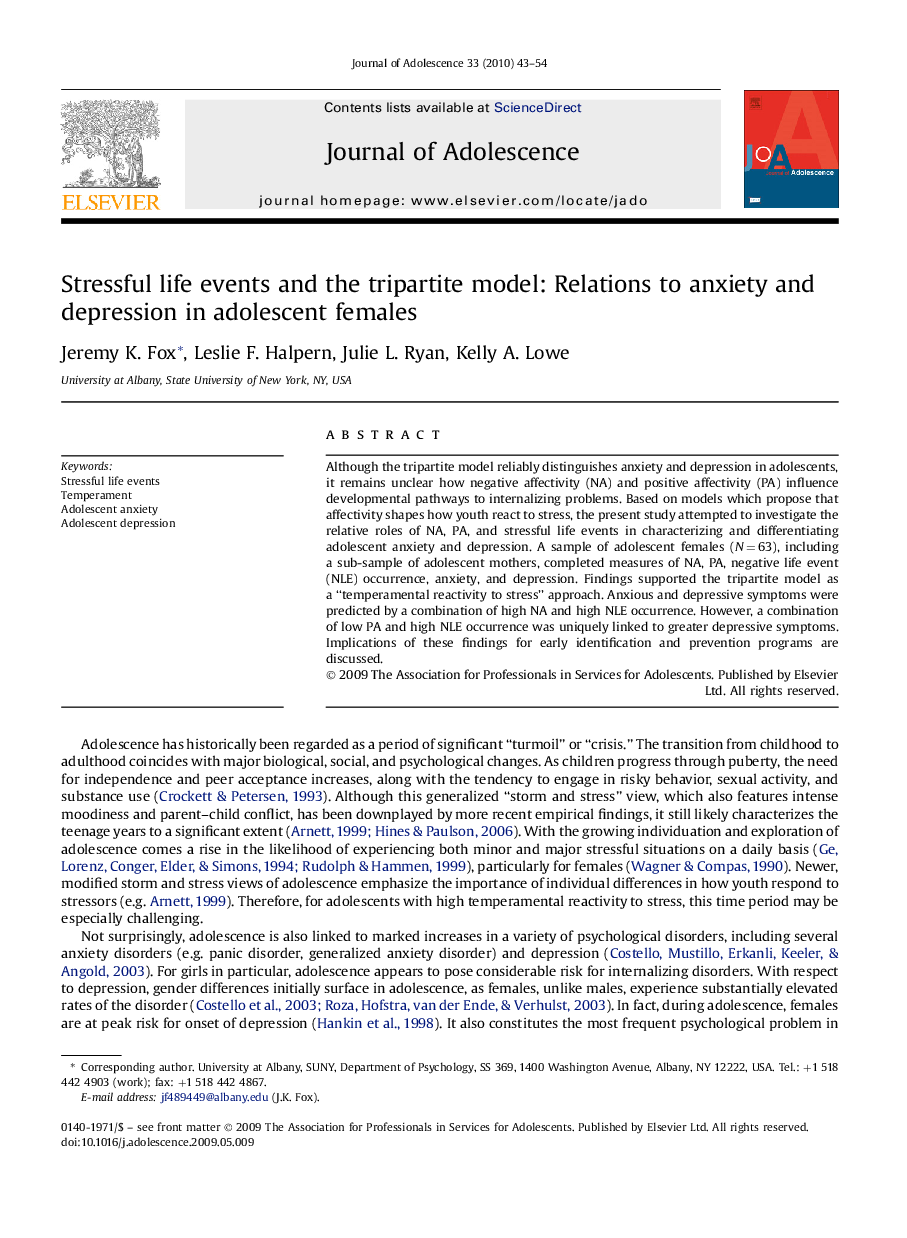| Article ID | Journal | Published Year | Pages | File Type |
|---|---|---|---|---|
| 881001 | Journal of Adolescence | 2010 | 12 Pages |
Although the tripartite model reliably distinguishes anxiety and depression in adolescents, it remains unclear how negative affectivity (NA) and positive affectivity (PA) influence developmental pathways to internalizing problems. Based on models which propose that affectivity shapes how youth react to stress, the present study attempted to investigate the relative roles of NA, PA, and stressful life events in characterizing and differentiating adolescent anxiety and depression. A sample of adolescent females (N = 63), including a sub-sample of adolescent mothers, completed measures of NA, PA, negative life event (NLE) occurrence, anxiety, and depression. Findings supported the tripartite model as a “temperamental reactivity to stress” approach. Anxious and depressive symptoms were predicted by a combination of high NA and high NLE occurrence. However, a combination of low PA and high NLE occurrence was uniquely linked to greater depressive symptoms. Implications of these findings for early identification and prevention programs are discussed.
